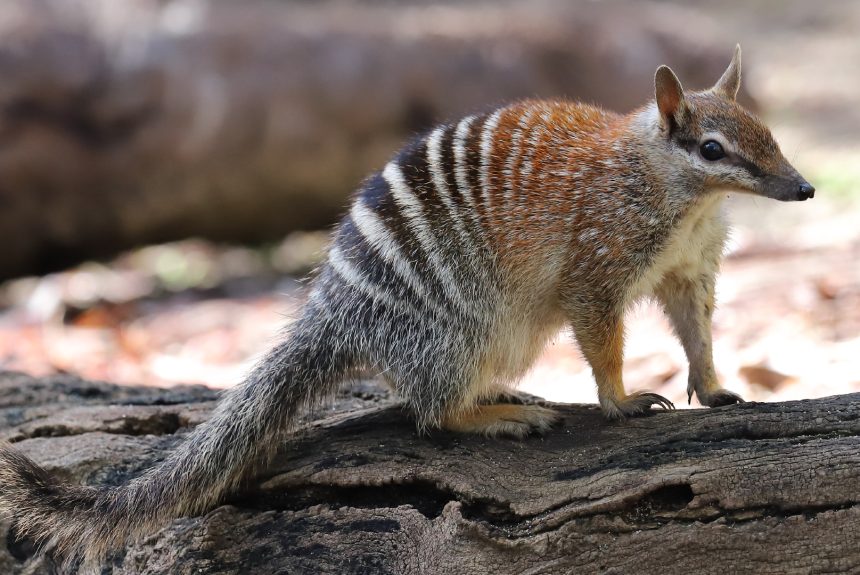The Numbat (Myrmecobius fasciatus) is Western Australia’s mammal emblem, but is sadly listed as Endangered in the IUCN Red List of Threatened Species. It once existed across much of southern Australia but by the 1980s only two small populations, comprising around 300 individuals, could be found in south-west Western Australia. The devastating reduction in distribution was attributed to the introduction of the European red fox, changes in fire regimes, and land clearing. Recovery efforts have been implemented which include fox baiting, translocation of wild Numbats to establish new populations, and a captive breeding program.
The recovery efforts have seen an appreciable increase in numbers and successful re-introductions into six conservation areas and two fenced sanctuaries. Despite all this, the Numbat remains at risk of extinction with feral cats being the biggest threat to Numbat populations at present. Ongoing research initiatives from the Department of Environment and Conservation (DEC) include a radio tracking project managed by Dr Tony Friend (Principal Research Scientist). The project is an annual affair that has taken place in Dryandra Woodland near Narrogin since 2006. A family of Numbats are fitted with radio tracking collars and their movements monitored by four radio tracking towers erected in the mother’s home range. The data collected will hopefully gain insight into the juveniles’ use of their mother’s home range prior to dispersal. Driving surveys are another key aspect of the project. As many numbats as possible are found and fitted with radio tracking collars so they can be periodically monitored throughout the life of each numbat to gain further information. Some of these collared Numbats are re-caught at later stages and released in other locations, while others are re-caught to supplement the Perth Zoo’s captive breeding program.
In 2010 all funds collected from the Don’t Bag the Environment program were donated to the radio tracking project which has many benefits for Numbat conservation efforts, and will hopefully help ensure the survival of this remarkable and beautiful little mammal.


